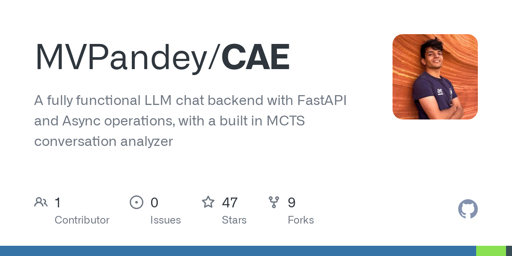Instead of just generating the next response, it simulates entire conversation trees to find paths that achieve long-term goals.
How it works:
- Generates multiple response candidates at each conversation state
- Simulates how conversations might unfold down each branch (using the LLM to predict user responses)
- Scores each trajectory on metrics like empathy, goal achievement, coherence
- Uses MCTS with UCB1 to efficiently explore the most promising paths
- Selects the response that leads to the best expected outcome
Limitations:
- Scoring is done by the same LLM that generates responses
- Branch pruning is naive - just threshold-based instead of something smarter like progressive widening
- Memory usage grows with tree size, there currently no node recycling



Interesting. I’m not sophisticated enough to judge this particular implementation but the concept of generating entire conversation trees to judge the quality of an output intrigues me for sure and I’d be interested in reading more about it and any research around it. Got any good links for further reading?
I think that’s an interesting approach as well. There are a bunch of research papers on using MCTS with LLMs, a few examples here:
https://arxiv.org/abs/2503.19309
https://arxiv.org/abs/2505.23229
https://arxiv.org/abs/2504.02426
https://arxiv.org/abs/2504.11009
https://arxiv.org/abs/2502.13428